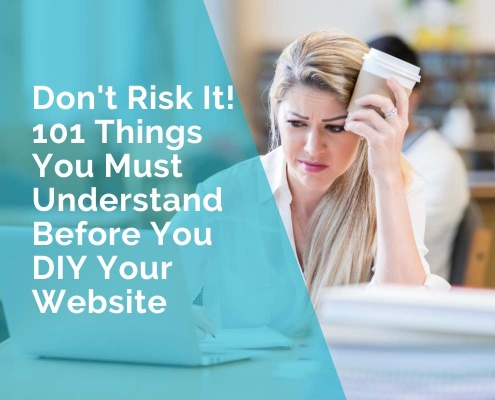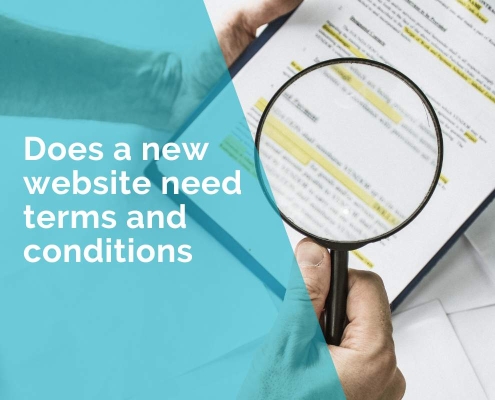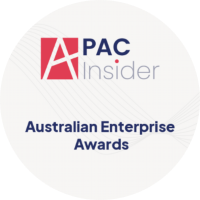Building Unshakeable Trust: How Your Website Becomes Your Most Powerful Credibility Tool
In the digital marketplace, trust isn’t given freely. It’s earned through every pixel, every word, and every interaction on your website. Potential customers researching your business online are making split-second judgments about your credibility, professionalism, and financial stability before they ever pick up the phone or send an inquiry. Your website isn’t just a digital brochure anymore. It’s your handshake, your business card, and your reputation all rolled into one critical first impression.
The businesses that thrive online understand a fundamental truth: credibility translates directly to conversions. When visitors trust your brand, they’re more likely to engage with your content, request your services, and ultimately become paying customers. Yet many business owners struggle with the question of how to effectively demonstrate their expertise, stability, and trustworthiness through their digital presence.
This article explores practical, actionable strategies for using your website to build unshakeable credibility and showcase your business as a stable, professional operation. Whether you’re a startup working to establish your reputation or an established company looking to strengthen your online authority, these insights will help you transform your website from a simple information source into a powerful trust-building machine.
The Psychology of Online Trust: What Makes Visitors Believe in Your Business
Before diving into specific tactics, it’s worth understanding what creates trust in the digital space. Research consistently shows that website visitors form opinions about credibility within milliseconds of landing on a page. These instant judgments are based on visual design quality, content professionalism, and subtle cues that signal legitimacy versus amateurism.
Professional design immediately communicates that you’ve invested in your business. Clean layouts, consistent branding, and modern aesthetics signal that you’re serious about your operations. Conversely, outdated designs, broken images, or inconsistent formatting raise red flags that make visitors question whether you’re still in business or capable of delivering quality services.
Content quality matters just as much as visual presentation. Grammatical errors, vague descriptions, or thin content suggest carelessness and lack of attention to detail. Well-written, informative content demonstrates expertise and shows you understand your customers’ needs. The depth and specificity of your content directly correlates with how seriously visitors take your business.
Social proof plays a massive role in establishing credibility. Humans are inherently social creatures who look to others’ experiences when making decisions. Testimonials, case studies, client logos, and reviews provide the validation that transforms skeptical visitors into confident leads. The more specific and verifiable your social proof, the more powerful its impact on trust.
Transparency builds confidence in ways that promotional content never can. Sharing information about your team, your process, your pricing structure, and even your challenges shows authenticity. Businesses that hide behind vague language or refuse to provide substantive information trigger suspicion. Those that openly share details demonstrate they have nothing to hide.
Demonstrating Financial Stability Through Strategic Website Elements
Financial stability isn’t something most businesses explicitly discuss on their websites, yet it’s something potential customers absolutely care about. They want assurance that you’ll be around to fulfill commitments, honor warranties, and provide ongoing support. Smart website strategies can communicate financial health without ever mentioning your bank balance.
Longevity indicators subtly communicate stability. Your “About” page should prominently feature your founding date and company history. If you’ve been in business for years or decades, that track record speaks volumes about your financial viability. Milestone celebrations, anniversary content, or “serving customers since…” statements provide reassuring context about your staying power.
Team showcases demonstrate investment in human capital. A robust “Team” page with professional headshots, detailed bios, and specific expertise areas shows you’re not a one-person operation barely scraping by. Growing teams signal business growth. Specialized roles indicate you’ve reached a scale that requires dedicated experts. Long-tenured employees suggest you treat staff well and maintain stable operations.
Professional partnerships and certifications communicate that other established organizations vouch for you. Industry association memberships, manufacturer certifications, and partnership logos from recognized brands provide third-party validation of your legitimacy. These relationships suggest you’ve met specific standards and maintain good standing within your professional community.
Physical presence matters in the digital age. Prominently displaying your office address (not a P.O. box), local phone numbers, and even photos of your physical location ground your business in reality. Google Street View integration or office tour videos further cement that you’re a real operation with brick-and-mortar investment. For service-area businesses, clearly defining your geographic coverage demonstrates you’re established within specific communities.
Investment in content marketing signals long-term thinking. Regularly updated blogs, resource libraries, video content, and educational materials require sustained effort and investment. Businesses struggling financially typically can’t maintain consistent content production. A rich content archive dating back months or years subtly communicates that you have the resources and stability to invest in customer education beyond immediate sales.
Technology and security investments build confidence. SSL certificates (the padlock icon in browsers), privacy policies compliant with current regulations, modern payment processing systems, and responsive mobile design all signal that you’re investing appropriately in your digital infrastructure. Security badges, trust seals, and compliance certifications show you take customer protection seriously.
Building Authority Through Strategic Partnerships and Local Expertise
One of the most effective ways to demonstrate credibility is by showcasing your connections within your industry and community. Strategic partnerships, professional relationships, and local expertise all contribute to a perception of trustworthiness that’s difficult to establish through self-promotion alone.
Local expertise carries particular weight for service-based businesses. When potential customers see that you’re deeply embedded in their community, it creates comfort and confidence. You’re not a faceless national company. You understand local market conditions, regulations, and customer needs. You have a reputation to protect within a specific geographic area. This localization makes you more accountable and trustworthy.
Highlighting relationships with other trusted professionals multiplies your credibility exponentially. When you can demonstrate connections with established experts in complementary fields, it suggests you operate at a professional level where these relationships are standard. This is particularly powerful for businesses that serve as connectors or facilitators in complex transactions.
Consider financial services, real estate, legal services, and similar industries where multiple professionals often collaborate to serve clients. A real estate agent who openly discusses working with reputable conveyancers, building inspectors, and financial advisors demonstrates they’re part of a professional ecosystem. This network effect builds trust because it shows you’re not operating in isolation.
For businesses in Melbourne’s competitive service landscape, establishing yourself as a connected, trusted professional matters immensely. This is especially true in industries like finance, where expertise and reliability are non-negotiable. Whether you’re operating in property, business consulting, or financial services, your ability to refer clients to other trusted experts demonstrates market knowledge and professional standing. For instance, businesses often benefit from relationships with the best mortgage broker in Melbourne, creating referral partnerships that serve customers while demonstrating your commitment to connecting clients with specialized expertise they need.
Professional referral relationships work both ways, creating a credibility multiplier effect. When established professionals in adjacent industries refer clients to you, it provides powerful third-party validation. Showcasing these relationships on your website, whether through partnership pages, testimonials from professional colleagues, or case studies involving collaborative work, significantly strengthens your authority.
Community involvement demonstrates commitment beyond profit. Sponsorships of local events, participation in industry associations, speaking engagements, and charitable activities all signal that you’re invested in something larger than just your bottom line. These activities typically require both financial resources and time commitment, implicitly communicating business stability while building brand reputation.
Content Strategy: Proving Expertise Through Educational Resources
Your website’s content library is perhaps the single most powerful tool for demonstrating expertise and building long-term credibility. While promotional content tells visitors you’re good at what you do, educational content shows them by demonstrating your knowledge depth and willingness to share it generously.
Comprehensive guides and resources establish thought leadership in your field. When you create detailed, genuinely helpful content that addresses customer questions and pain points, you’re providing value before any transaction occurs. This generosity builds goodwill and positions you as an expert invested in customer success, not just sales.
Specificity separates real expertise from generic marketing. Anyone can write vague content about “quality service” or “customer satisfaction.” True experts provide specific insights, detailed processes, nuanced perspectives, and practical advice that only comes from deep experience. The more detailed and actionable your content, the more credibility it generates.
Frequency and consistency matter tremendously. A blog with three posts from 2019 suggests abandonment and raises questions about business continuity. Regular content updates signal active operations and ongoing investment. Even modest but consistent publishing schedules (monthly or quarterly) demonstrate stability far better than sporadic bursts followed by long silences.
Multiple content formats demonstrate sophistication and investment. Written articles, video tutorials, podcasts, infographics, downloadable templates, and interactive tools all require different skills and resources to produce. Businesses offering diverse content types signal they have the capability and stability to invest across multiple channels.
Original research and data provide unmatched authority. Industry surveys, market analysis, trend reports, or case study findings that you’ve produced yourself can’t be replicated by competitors. This proprietary content positions you as a primary information source rather than an echo of others’ insights. The investment required to produce original research inherently signals business stability.
Updating existing content shows diligence and ongoing attention. Many websites publish content and forget it. Businesses that revisit popular pages to update statistics, add recent examples, or refine advice based on new developments demonstrate they’re actively engaged with their field. “Last updated” timestamps on key pages can actually build credibility when they’re recent.
Technical Excellence: The Foundation of Digital Credibility
While content and design capture attention, technical excellence provides the foundation that makes credibility possible. Technical problems erode trust faster than almost anything else because they suggest carelessness or lack of resources to maintain proper standards.
Website speed directly impacts both user experience and perception of professionalism. Slow-loading pages frustrate visitors and trigger concerns about whether your business operates with similar sluggishness. Performance optimization isn’t just about search rankings. It’s about demonstrating you respect customers’ time and maintain modern technical standards.
Mobile responsiveness is no longer optional. With most website traffic coming from mobile devices, a site that doesn’t adapt properly to smartphones and tablets immediately communicates that you’re behind the times. Mobile optimization signals you’re keeping pace with technology and customer behavior.
Security measures protect both your business and visitors. Beyond SSL certificates, implementing proper security headers, regular software updates, secure contact forms, and compliant data handling practices shows you take protection seriously. In an era of frequent data breaches, visible security measures build confidence.
Accessibility features demonstrate inclusivity and attention to standards. Proper heading structure, alt text for images, sufficient color contrast, and keyboard navigation support show professional attention to detail. While many visitors won’t notice these elements directly, they contribute to overall site quality and demonstrate comprehensive thinking.
Error handling matters more than many realize. Broken links, 404 pages without helpful navigation, form errors without clear messaging, or outdated information all chip away at credibility. Quality assurance processes that catch and fix these issues before visitors encounter them separate professional operations from amateur ones.
Integration with professional tools signals capability. CRM systems, appointment scheduling, secure payment processing, customer portals, and other integrated functionality demonstrate investment in proper business infrastructure. These tools also improve customer experience, creating a virtuous cycle where better service reinforces positive perceptions.
Putting It All Together: Your Credibility Action Plan
Building credibility through your website isn’t a one-time project. It’s an ongoing commitment to excellence across design, content, technical performance, and strategic positioning. The most successful businesses treat their websites as living assets that require continuous attention and investment.
Start with a comprehensive credibility audit. Review your current website through the lens of a skeptical potential customer. What trust signals are present? What elements raise questions or concerns? Where does your site fall short of competitor standards? This honest assessment identifies your starting point and priority improvement areas.
Implement quick wins that deliver immediate credibility boosts. Professional photos, updated team bios, recent blog posts, client testimonials, security badges, and contact information verification can all be accomplished relatively quickly while providing meaningful trust improvements.
Develop a content calendar that ensures consistency. Regular publishing schedules, even modest ones, keep your website fresh and demonstrate ongoing operations. Plan content themes, assign responsibilities, and commit to maintaining momentum.
Invest in relationships that amplify your credibility. Strategic partnerships, professional networks, industry associations, and referral relationships all deserve cultivation. Feature these connections appropriately on your website to leverage their trust-building power.
Monitor and measure what works. Analytics data reveals which content resonates, which trust elements drive conversions, and where visitors lose confidence. Use these insights to continuously refine your credibility strategy.
Your website is far more than a digital storefront. It’s your most powerful tool for building the trust that converts visitors into customers and customers into advocates. By strategically implementing the credibility elements outlined in this article, you transform your online presence into a compelling demonstration of expertise, stability, and trustworthiness that drives sustainable business growth.
The digital landscape rewards businesses that invest in building genuine credibility through every aspect of their online presence. Those that take this seriously create competitive advantages that compound over time, while those that neglect it struggle to overcome skepticism and establish themselves as trusted authorities. Where does your website currently stand, and what’s your next step toward unshakeable credibility?
***
Vlad Orlov












